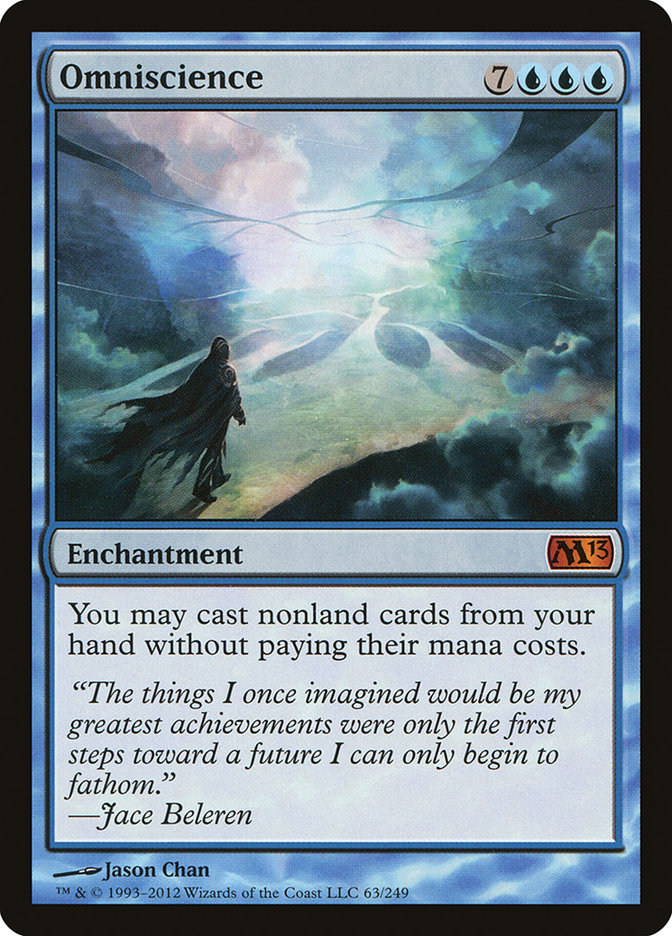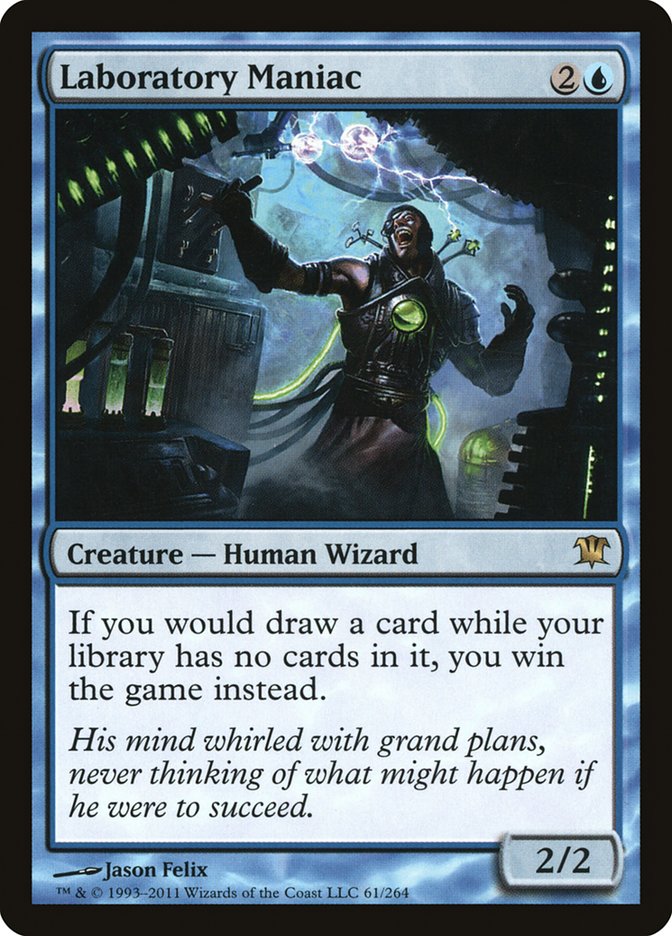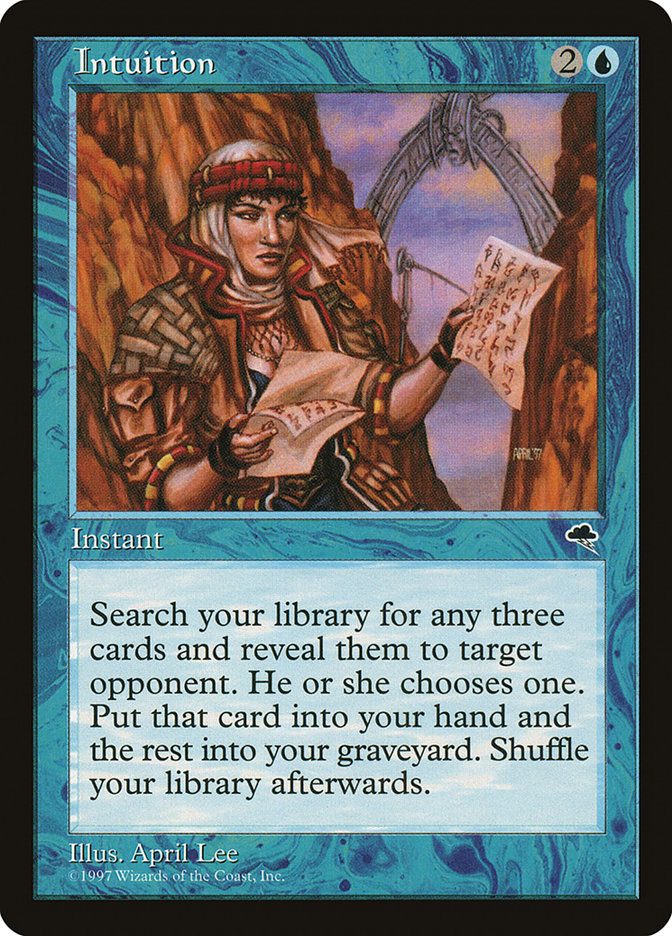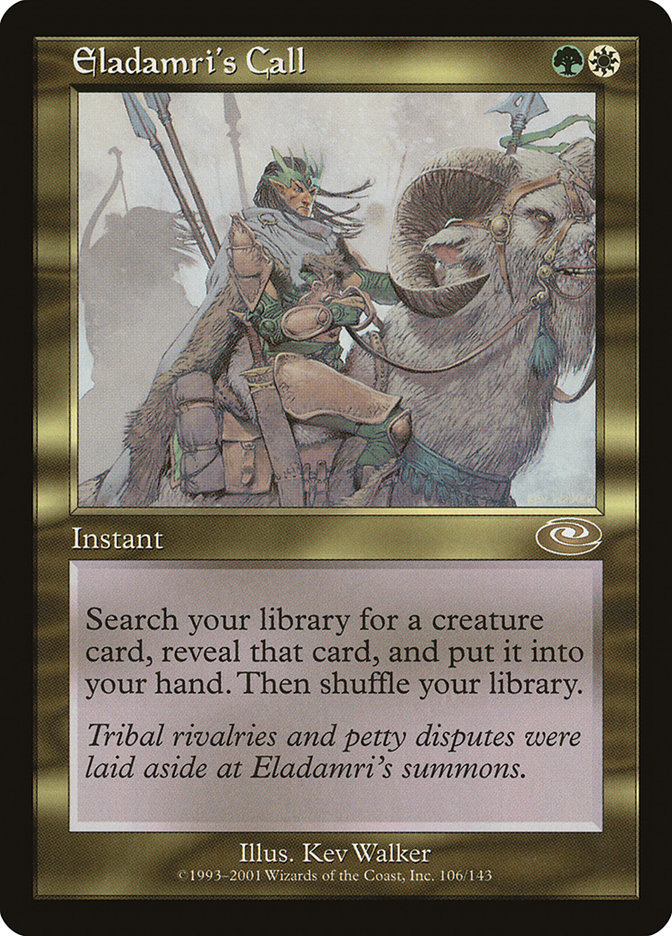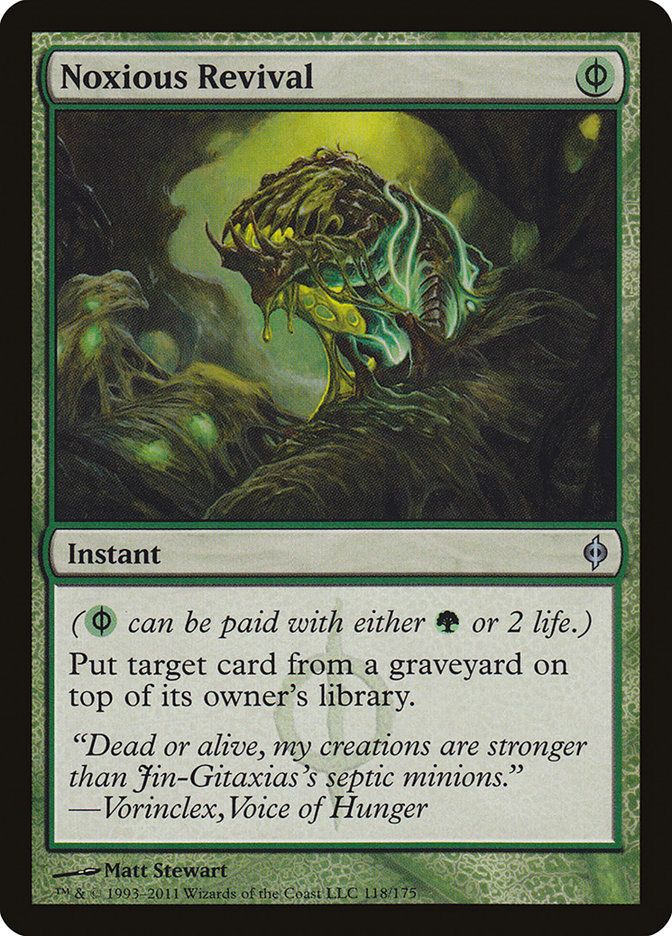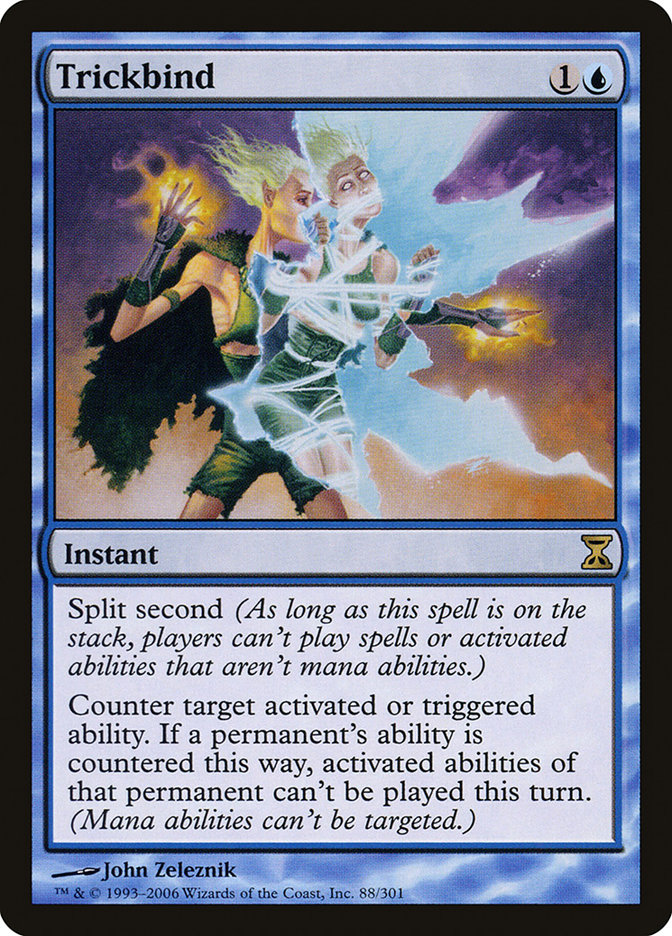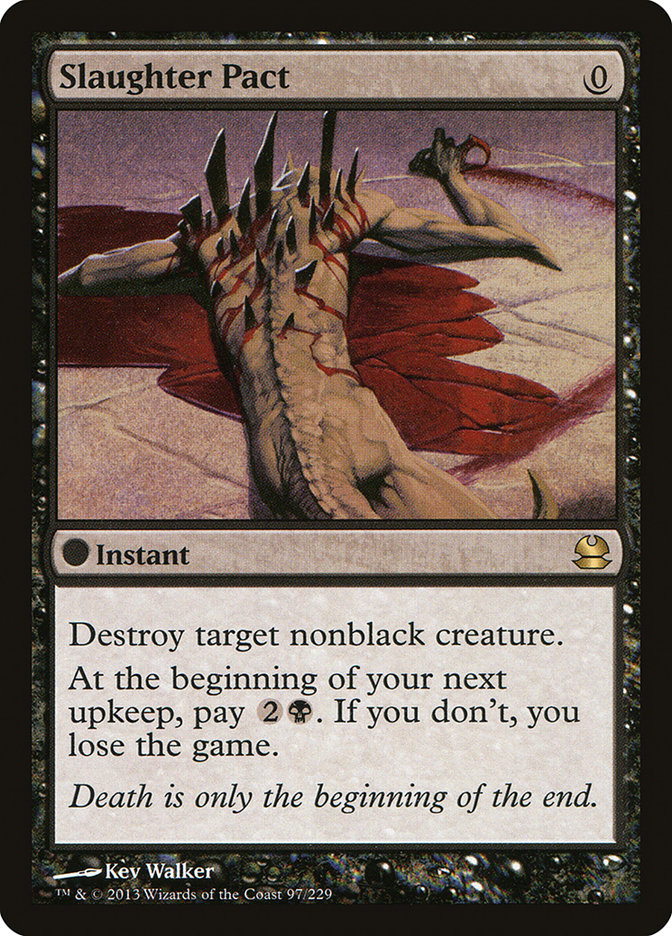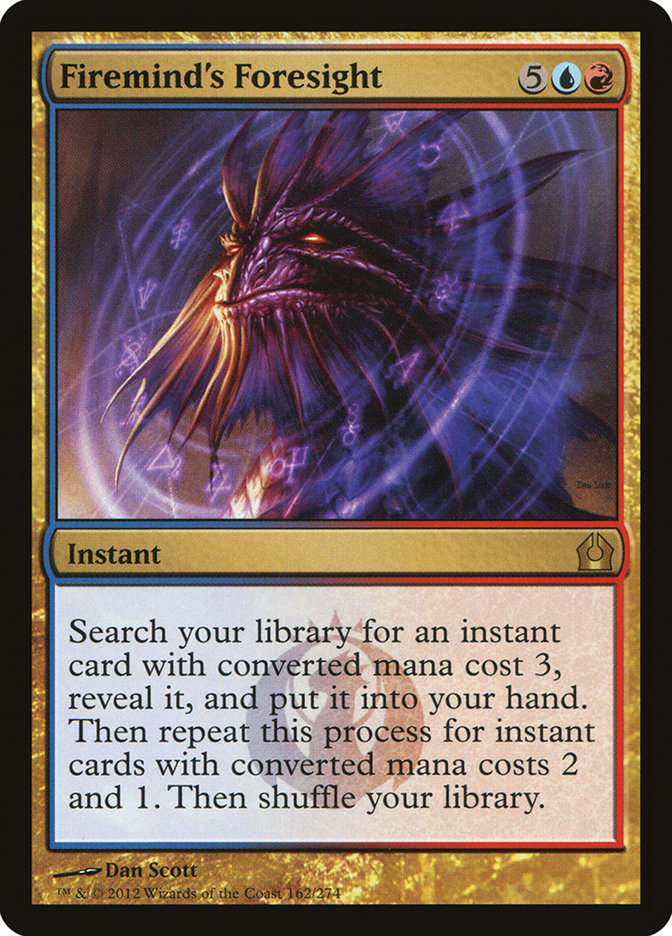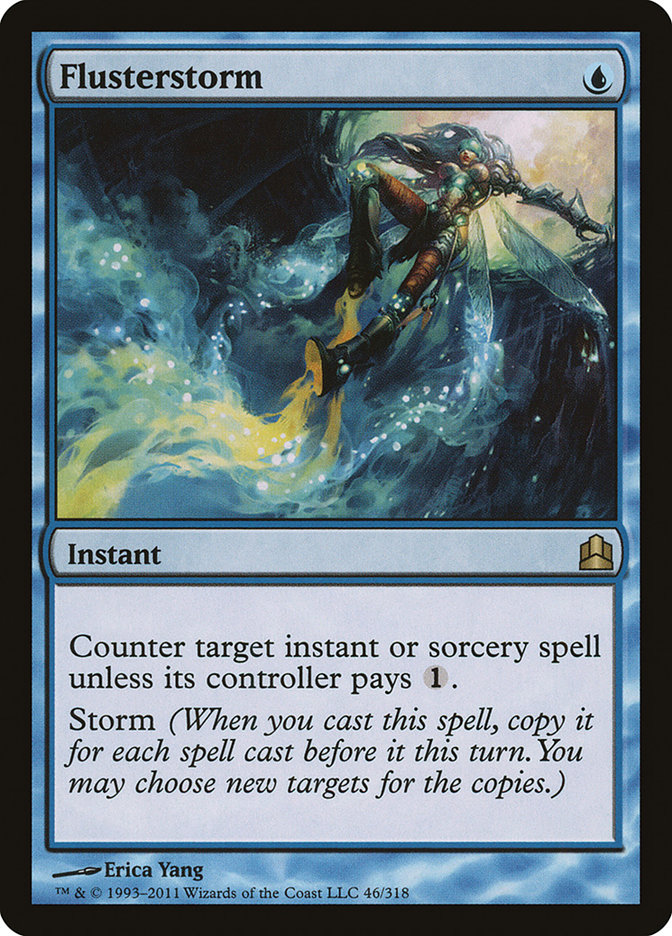The StarCityGames.com Invitational in New Jersey took place recently, and for me it was a trying time. Day 1 began and ended with more of a whimper than a bang. I played extremely poorly in round 1 but still managed to win; in round 3, my errors caught up with me, and I lost. I played Reid’s Jund deck, assuming I would be better served than taking a shot on the "elf ball" deck that Huey eventually made it to the finals of the Standard Open with that weekend, and I was probably wrong. I lost round 4 as well, leaving me at 2-2.
Luckily, it was time to play Legacy, which is by far my favorite format to play and think about. The cards are sweet, and by that I mean I enjoy playing with FBB Duals, Guru lands, and the like. I know it’s silly, but I don’t think I’m alone when I say that playing with these cards actually makes me happy; that being said, I try not to let this influence my decisions.
Knowing what I knew about the projected Invitational metagame, I was initially happy with my choice of Jund for Legacy, going as far as to simply play my Grand Prix Denver list—not for lack of innovation but rather a recognition of the metagame being ripe for the deck to succeed. For that matter, looking at Legacy Daily Event results seemed to confirm my choice, as the most played decks online seemed to be Shardless BUG and Esper Deathblade, both of which have trouble removing your plethora of "must kill" creatures.
Esper Deathblade has Swords to Plowshares but not much else, and while Shardless BUG has Ancestral Vision as a card that is somewhat scary, it also only has Abrupt Decay and a Maelstrom Pulse—meaning your turn 1 Deathrite Shaman is probably going to live or get Force of Willed! It’ll be up to them to decide if they want to kill your turn 2 Confidant or your Shaman. Grim Lavamancer is also a nightmare for them, although I did cut one for the fourth Bolt since I didn’t want to be without answers to opposing turn 1 Shaman myself.
Unfortunately for me despite correctly predicting the metagame for the most part, I was still paired against some of the more fringe strategies. After beating a normal Deathblade deck, I lost to a Tundra / Grove of the Burnwillows deck that Punishing Fired my Dark Confidant and then cast Rest in Peace! I believe I threw away game 3 here as well, adding insult to my misery. Finally, with my heart pretty far out of it sitting at a record of 3-3, I mulliganed to four against a deck that, after some research, is called "Mighty Quinn." The games weren’t close since I couldn’t defeat Elspeth-Knight Errant, or Scrying Sheets, or really any of it.
I felt pretty disgusted after the loss, but it wasn’t a total waste because I was able to determine that I didn’t want to play Jund on Sunday in the Open. I decided that I wanted to play Mono-Blue Show and Tell instead; it’s a deck with many names, but in the end it is what it is: Mono-Blue Show and Tell. For the record, I do like the name "Omni-Maniac," but the build I used didn’t incorporate Laboratory Maniac so it isn’t really appropriate.
I’d been eyeing the deck prior to the Invitational as a possibility, and Gerry Thompson even told me he thought it was pretty sweet but warned me of what we both already knew—the Esper Deathblade decks would have incidental sideboard cards that would make it tough. I mention this to you because if you don’t already know this, for the most part the metagame in the Invitational is not comparable to the metagame in an Open. Esper Deathblade and Shardless BUG are much more popular in a hypothetical Invitational right now.
This might not always be the case, but Esper Stoneblade was the flavor of the Invitational before, and while I don’t know what’s next, I do know that this is a real phenomenon. This, of course, was partially responsible for my decision to play the Jund deck I did, and for the record I still like the Jund deck in this metagame. I just knew I didn’t want to play it again in the Open.
Eventually I got in touch with Drew Levin, who gave me his thoughts on the deck. Due to Drew’s recent performances with the deck, I knew I had to take some of what he was saying with a grain of salt since he was obviously high on the deck. That being said, with a Top 32 and a Top 16 under his belt prior to the Invitational, my confidence was already growing, and his experiences were of interest to me. I’d played a few matches with the deck online to get a feel for it and wasn’t thrilled with it, and in combination with my fear of the aforementioned Esper and BUG decks, I shied away when I should not have. Playing with "the fear" does not lead to wins in Magic; deck choice fear is similarly an unsuccessful strategy.
But, after losing, nay, getting demolished in the Invitational with a "fair deck," I was for the time done with fair decks.
I don’t want to go too in depth on the "science" of deck selection here, as I’m actually planning on writing an article on exactly that in the coming weeks; however, for this deck specifically you should play it if you are looking for something that is simultaneously challenging and rewarding to play, something that is powerful and unfair, and perhaps if you are trying to beat Death and Taxes. Ordinarily if I were going to play an unfair deck, I’d talk to soon-to-be-Hall-of-Famer William Jensen about Sneak and Show; he’s been drinking the S&S Kool-Aid ever since I told him about it back in February, and his list is probably the best you can find right now.
But I stuck to my guns since I had somewhat fallen in love with Mono-Blue Show and Tell already and I knew that there was a good chance Team Rocket would be in attendance for the Legacy Open with their trusty Death and Taxes in tow. Their combined record in the Invitational with the deck was 13-2-1, which is amazing, and I knew that the matchup for Sneak and Show is probably around 20%, which is decisively not amazing.
Here is the list I used, which is a list based on what I found on mtgthesource.com during my should-have-been-preparation for the Invitational.
Creatures (1)
Lands (19)
Spells (40)

The concept is as simple as it is unfair. Ideally you spend three mana to cast Show and Tell, putting Omniscience into play. Once you’ve gained infinite knowledge, cast Enter the Infinite putting either Enter the Infinite or Emrakul (if you haven’t boarded it out) on top of your deck. From here you can wish for Release the Ants and Clash them to death or can cast Emrakul and rid them of their permanents.
Don’t forget you can cast more Enter the Infinites to prevent yourself from decking. There are other ways to assemble the combo; Show and Telling a Dream Halls or casting Dream Halls is acceptable as well. In some matchups, where they can for example put their own Omniscience into play or an Iona, Shield of Emeria, you should try not to cast Show and Tell unless you must. In these situations, you want to lean instead on Dream Halls. My Dream Halls are Japanese, and in case yours are too, don’t forget that Dream Halls is for both players. This means your opponent can now cast the card Counterspell as if it were Force of Will and same for Red Elemental Blast. You’ve been warned.
In practice, though, things are almost never that simple. Most decks include some kind of disruption, and in a way that’s where the fun starts. I’ve been playing Magic for a long time, and I honestly think this is the most difficult deck that I’ve ever played. I think it stems from the fact that each time you cast a Preordain, Ponder, or Brainstorm, you need to figure out what you need to do with all three pieces according to what is in play on both sides of the field.
This might not be so bad in a four-round event (a day of the Invitational for example) but over ten rounds in the largest Legacy Open to date, it was quite taxing. Gitaxian Probe is a great addition to the deck, and while you side them out often enough, the extra information you glean can be invaluable. For that matter, for some people Probe itself might be reason enough to play this deck!
As you can see, the deck is essentially Wasteland proof, which is a nice bonus. The list itself is not really noteworthy, but I did choose to try the maindeck Leyline of Sanctity, whereas Drew had previously recommended moving it to the board, and thus played Noxious Revival. To be fair, I Wished for Noxious Revival exactly once, but it does have its uses. If I’d played against different decks, it might have come up more; mostly I didn’t want to be caught with my pants down quite literally Wishing that I had the Revival in my sideboard.
Depending on the number of graveyard decks you’re likely to face in your local metagame, you may choose not to play it. Similarly, if your local metagame does not consist of a lot of discard-filled, grindy decks, the maindeck Leyline will not be of much use to you, so you should keep that in mind for your upcoming events.
The Wish targets may require some explanation, so I will quickly run through them:
Intuition – I would not call this the best Wish target, but it is the most important, allowing you to turn Cunning Wish into Demonic Tutor often for free (under Omniscience). This allows you an enormous range of access to the cards in your deck; if you need to Wish for protection, you can often directly just Wish for Pact of Negation in most circumstances, but if you need to Wish for anything else, this is where you want to be.
Eladamri’s Call – This opens the door for Emrakul, which means that if you have Omniscience and Cunning Wish, you can still win the game even without Enter the Infinite. Of note, Emrakul is particularly strong against Gaddock Teeg and friends, as Show and Tell, Cunning Wish and Eladamri’s Call all cost the magic number of < 4.
Noxious Revival – Fringe usefulness against discard and counterspells; can be used to counter an opposing Surgical Extraction or against Reanimator or Dredge. The card is pretty bad, so not wanting it in your sideboard does not offend me, but it isn’t useless either. I still would not necessarily recommend snap cutting it in favor of the maindeck Leyline coming out.
Trickbind – This can stop a range of triggered abilities, from your own Pact of Negation triggers to opposing Oblivion Ring or Detention Sphere triggers and nearly anything in between.
Sapphire Charm – At the end of your turn, I’ll phase out your Gaddock Teeg, Thalia, or Ethersworn Canonist. For one blue mana, you can do a lot worse. You’re never going to Wish for this and cycle it; likewise, nothing will gain flying while this is in your hand. It’s just to deal with hate bears.
Rushing River – Similar to Sapphire Charm, this can deal with two permanents and isn’t limited to creatures, let alone a single one.
Slaughter Pact – Similar to Sapphire Charm, this costs no mana the turn you are going to win but requires a Trickbind or a Release the Ants victory.
Release the Ants – Last but not least, this is the way you win the game when you need to win this turn. Too many Pacts can be troubling; similarly, if you cast Emrakul, attack with it, and trigger it and they still aren’t dead, you are going to need to survive a turn, which may not always be possible. A lot of the time this is the cleanest way to win, but Emrakul is certainly easier.
You may wonder why there are three different cards to deal with opposing hate permanents, but there are actually decks that can present more than one of these creatures or enchantments. Not every game is going to require you to Wish for these cards, but if you ever do end up puzzling yourself out of a hole with these pieces, you will both feel good and be glad that you could Wish for them in the first place. Don’t forget that under the current floor rules you are allowed to look at your sideboard at any time. The worst thing you can do is not Wish for something because your overconfidence prevented you from looking in your sideboard and figuring out what you needed to do.
Those of you familiar with the deck might be wondering about two cards in particular, and I’ll give you my thoughts on them:
Firemind’s Foresight is an amazing card when it costs zero mana, often winning the game by itself. We can all see that. However, for all the rest of the time when it costs seven, it isn’t playable. Okay, so what does that mean? Well, I think it’s basically only going to be good for you in a Show and Tell mirror; the way the games play out the aggressor is going to lose most of the time; and being able to Cunning Wish for this card, which will then get you another Wish and a Brainstorm at the very least, is a big threat if they know about it and probably game over if they do not.
However, there is a problem. I’m not playing a two-mana search spell. It isn’t terribly difficult to put an Impulse into the deck; the card is "good," but I did cut a land for a Probe; and while turning a Probe or a Preordain into an Impulse might not destroy the deck outright, it definitely hurts the percentages. I might have already gone too far in cutting the land in the first place, but I didn’t get punished this time, which was nice. So Firemind’s Foresight requires you to play an Impulse in your deck. Not interested right now, but come to me when the metagame is full of Omniscience and the story is completely different. In fact, I’d probably go as far as to recommend absolutely playing Firemind’s Foresight at that point as long as you are willing to also play Flusterstorm (and Impulse).
I was recently schooled in a mirror match, so let me explain to you how it goes. First, know that the most important thing seems to be making sure you can’t lose rather than making sure you can win. That is to say that until your seven cards are perfect you really need not worry about assembling the combo. At least in game 1. One player, perhaps the less experienced player or the one who mulliganed and may feel their chance is now or never, will cast Show and Tell, and then most likely both players will have infinite knowledge.
You’ll have to decide if you want the Show and Tell to resolve, which if you’ve been anticipating it means you need to have an Omniscience in your hand, or else you’re likely going to want to fight over it. At this point it’s just a matter of having more counterspells, which is where Wish for Firemind’s Foresight for Flusterstorm is especially devastating. It’s trivial to counter two different spells with Flusterstorm with some creative stack management. You can in essence "trap" them by leaving their Enter the Infinite and their, say, Cunning Wish on the stack while your Flusterstorm slam dunks their spells into the graveyard.
Against Sneak and Show, the game is slightly different because they obviously don’t have Omniscience but instead have more castable counters (Spell Pierce rather than Pact of Negation) and Sneak Attack itself is a one-way delight for them, which is troubling for you. The other builds of Omniscience (U/R Burning Wish for example) play out roughly the same. Traditionally, if both players know what they’re doing, the games can go kind of long because it’s very risky to actually try to do anything—as illustrated above—so sideboarding out a Brainstorm can be something you might want to do as it is an investment in the later game, making your Wishes much better as you’re sculpting the hand that can win.
While I think you can win against Sneak and Show and the actual Omniscience mirror is a bit of a flip if both players know what they’re doing, Reanimator is a different story. I don’t think you can really ever win unless they mulligan to oblivion. Their normal draw will beat your normal draw, and if you ever need to mulligan yourself, you will certainly lose. A Thoughtseize will tell them what to do while showing them what you have and buying them time to cast all the Careful Studys in the world, which will eventually get them an Iona, Shield of Emeria, which is the end. Once you know you’re playing against Reanimator, you should feel free to keep riskier hands, but if you miss know you would have lost anyway.
Sideboarding with the deck is usually intuitive; since your sideboard only contains Defense Grid and Leyline of Sanctity, you can quickly determine whether you want or need either card and go from there. The cards to take out are usually the Leyline, a Dream Halls, and the two Gitaxian Probes. Against a grindy control deck like Miracles, you can board out an Island instead.
While I do suggest you "fake sideboard" in between games so your opponent thinks you’re doing something, I also think you shouldn’t be afraid to simply not sideboard more than a card in some matchups (you might not want the maindeck Leyline, so bring in the Pact or the Trickbind when appropriate.) I should note that against some decks the Emrakul is superfluous. Decks that cannot attack your hand or your graveyard usually cannot beat simply clashing with Enter the Infinite, so if you need to you can board out the Emrakul as well.
The rest of the non-Show and Tell based field consists of matchups that range from very easy to favorable. For the most part right now, you should expect to win game 1 against an unknown deck. Decks are currently not built with a full complement of Force of Wills or Hymn to Tourachs in their maindeck, which is often those decks’ most important cards against you. The rest of their cards just aren’t good at interacting with you, and while they’re choking on Shardless Agents, Stoneforge Mystics, and Swords to Plowshares, you should easily be able to fight through the one piece of disruption they can muster in game 1.
The maindeck Leyline should shine for the time being; when you do hit it in your opening hand, it will protect you against most disruption and make game 1 that much easier. I suppose, though, you can argue that you don’t want to bother with it because game 1 is already very easy for the most part, but again if you move the maindeck Leyline to the sideboard, it requires you to lose a Wish target—and that’s difficult.
This especially pertains to RUG Delver, which has almost no hope of beating you. You can easily spend some life to play around their taxing counters (Daze, Pierce, etc.). Their clock is simply not fast enough, especially when they don’t have the turn 1 Delver that flips. You should be wary of Stifle, but you have enough basics that you don’t need to always fetch early. After board the Defense Grids are almost unbeatable. They have no real way of interacting with you other than with blue cards. Don’t forget that like Dream Halls Defense Grid is also a symmetrical effect. This brings me to the last thing I want to talk about today, and that is the interesting things that happened to me during the tournament.
Interestingly enough, playing against RUG Delver actually created the most thought-provoking situations. After winning game 1 by resolving the third of the three Show and Tells in my opening hand, I thought I had game 2 locked up with not one but two Defense Grids in play. My opponent saw his opening, though, and "got there." He had not revealed the fact that he was playing Stifle in his deck and I certainly should have just fetched on my turn, but since I didn’t he correctly shuffled away his Red Elemental Blast (revealed to Delver), Wastelanded my Flooded Strand, and Stifled the activation. I never drew another land and ended up losing a game I thought I could not lose.
Game 3 was a tense affair where I drew one more Cunning Wish than I wanted early on and we fought a somewhat in-depth battle over a Stifle on one of my fetches. I recovered, and he pecked away with some kind of 1/1 creature I think. Eventually I was in a position to get things started, and I ended up with an Omniscience in play. I had cast a Pact of Negation during my turn, so I needed to Trickbind it on my next upkeep since for whatever reason I was on Emrakul this game.
Anyway, the situation arose that if he had a Spell Pierce he could have Spell Pierced my free Cunning Wish and I would have lost on the spot (dying to my next upkeep Pact trigger). Now that I’m writing this, I am sure I played this badly and probably should have boarded out Emrakul in the first place, but alas. Anyway, the lesson here is to obviously be careful because even though something is free it can still be taxed.
In the end, after losing a hard-fought three-game match against Justin Uppal in round 10 (had the tournament been a smidge smaller I would have made Top 8!), I ended up in 11th place. Game 3 I was faced with a difficult decision. I had to decide how many Leyline of Sanctitys to put into play at the start of the game after mulliganing a hand that could produce a turn 3 Emrakul with a land that I deemed too bad against his Shardless BUG deck. I knew he had brought in Liliana of the Veil, which can easily deal with an Emrakul, and same for his maindeck Jaces. I also thought a Thoughtseize certainly spelled doom for this hand, so I shipped it. I decided to put both into play because I knew he had Golgari Charm to deal with one and likely only had one Maelstrom Pulse (turns out he boarded in a second one) to punish my decision.
I still don’t know what was right, as I didn’t have a Brainstorm in the hand but I could assume I might eventually find one given the grindy nature of the game—they board down to four Tarmogoyfs and four Deathrite Shamans, so their average draw doesn’t have much pressure. I eventually did find some Brainstorms along the way, and of course I think I could have won with one more card somewhere in the mix. In the end, he had me on a clock with a Goyf and a Liliana. I knew his hand was three Force of Wills and a Brainstorm. He Forced with Force the first time I tried to Show and Tell, so I just had to beat the second one while we each paid tribute to Liliana and his Goyf chipped away. I had a Pact, but unfortunately I just drew another Pact.
The last turn I possibly could do this I drew a Brainstorm and of course went for it. Show and Tell, Pact your Force, put Omniscience into play. Brainstorm . . . find two non-fetchlands and a Brainstorm. Okay, looks like we’re doing it again. Brainstorm here revealed nothing of use, and while I had Emrakul in my hand, I couldn’t pay for the Pact trigger and thus was dead. There was also a decision as to when I needed to put City of Traitors into play; I may have done it a turn too early, but I can’t explain because the situation surrounding it is too complicated. I just knew that I’d want enough mana to cast a one-drop search spell and a Show and Tell in the same turn and knew I had to discard excess lands to Liliana, but had I waited one more turn things would have likely been different.
Lastly, while all of my opponents were great to play against, I want to give special thanks to Keith Blackwell and Sean Park for being extremely gracious opponents and thanks to Jonah Acosta for hero-lending me the Rushing River that I did not have access to prior to the tournament.
Until next time.

